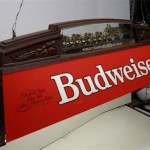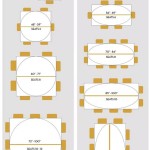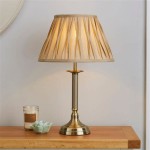Simple Dinner Table Setting Ideas
Creating an inviting and aesthetically pleasing dinner table setting doesn't require extensive effort or expensive materials. With a few thoughtful considerations and readily available items, it's possible to elevate the dining experience for both everyday meals and special occasions. The goal is to foster a sense of warmth and hospitality, encouraging conversation and enjoyment of the food.
A fundamental aspect of any table setting is functionality. Ensuring that each guest has the necessary utensils and sufficient space is paramount. Cluttered or incomplete settings can detract from the dining experience, making it difficult for guests to comfortably navigate their meal. Simplicity, therefore, often reigns supreme.
Key Point 1: Foundations of a Basic Table Setting
The foundation of any table setting, regardless of its complexity, begins with the basics. These are the elements that are essential for any meal and provide a framework upon which to build a more elaborate design, if desired. This foundational setting prioritizes practicality and serves as a starting point for personalization.
The first and arguably most important element is the placemat. A placemat serves both a practical and aesthetic purpose. It protects the table surface from spills and scratches, while also defining each individual's dining space. Placemats come in a variety of materials, from linen and cotton to vinyl and woven bamboo, allowing for easy coordination with the overall décor.
Next comes the dinner plate, which is centered on the placemat. The dinner plate is the largest plate in the setting and is used for the main course. Choosing a dinner plate that complements the placemat and other tableware is important for creating a cohesive look. Basic white plates are a versatile choice that can be dressed up or down depending on the occasion.
To the right of the dinner plate is the dinner knife, with the blade facing the plate. This placement follows standard etiquette guidelines and ensures that the knife is readily accessible for cutting food. A dinner spoon is placed to the right of the knife, also with the bowl facing up.
To the left of the dinner plate is the dinner fork. The fork is placed with the tines facing up. If a salad fork is needed, it is placed to the left of the dinner fork. This order ensures that guests use the appropriate utensils in the correct sequence of courses.
Finally, a water glass is placed above the knife, slightly to the right. This placement makes it easy for guests to reach their water glass throughout the meal. The water glass can be a simple tumbler or a more elegant stemmed glass, depending on the formality of the occasion.
This basic table setting is suitable for most casual meals. It provides each guest with the necessary utensils and tableware in a clear and organized manner, making for a comfortable and enjoyable dining experience. From this foundation, additional elements can be added to create a more elaborate setting.
Key Point 2: Adding Personal Touches and Decorative Elements
While a basic table setting provides the necessary functionality, incorporating personal touches and decorative elements can significantly enhance the aesthetic appeal and create a more inviting atmosphere. These additions can reflect individual style, complement the meal being served, or simply add a touch of whimsy to the table.
One of the easiest ways to personalize a table setting is through the use of napkins. Cloth napkins, in particular, offer a wide range of opportunities for creative styling. They can be folded in a variety of ways, from simple squares to elaborate origami-inspired designs. A napkin ring can also be used to add a touch of elegance or to coordinate with the overall theme of the table setting.
Centerpieces are another effective way to add visual interest to the table. A centerpiece can be as simple as a vase of fresh flowers or as elaborate as a multi-tiered display. The key is to choose a centerpiece that is proportional to the size of the table and that does not obstruct the view of guests across from each other. Low-profile centerpieces are generally preferred for fostering conversation.
Candles can create a warm and inviting ambiance. Whether using tall candlesticks or small tea lights, the soft glow of candlelight can enhance the dining experience. Unscented candles are recommended to avoid interfering with the aroma of the food. Candles should be placed safely away from flammable materials.
Seasonal decorations can also be incorporated to reflect the time of year. For example, pumpkins and gourds can be used as centerpieces in the fall, while evergreen branches and pine cones can be used during the winter holidays. These seasonal touches can add a festive and celebratory atmosphere to the table.
Place cards can add a personalized touch, especially for larger gatherings. Place cards can be handwritten or printed, and they can be placed on the plate or above the silverware. Place cards not only help guests find their seats, but they also show that thought and care has been put into the table setting.
Small favors or gifts can also be placed at each setting. These can be as simple as a small piece of candy or as elaborate as a personalized trinket. Favors add a special touch and show guests that they are appreciated.
When adding personal touches and decorative elements, it is important to maintain a sense of balance and harmony. Avoid overcrowding the table or using too many competing colors and patterns. The goal is to create a visually appealing and inviting setting that enhances the dining experience, not overwhelms it.
Key Point 3: Adapting to Different Occasions and Meal Types
The ideal table setting should be adaptable to different occasions and meal types. A formal dinner requires a more elaborate setting than a casual brunch, and a buffet-style meal calls for a different arrangement than a plated dinner. Understanding these nuances allows for a more appropriate and enjoyable dining experience.
For a formal dinner, a more elaborate table setting is typically expected. This might include multiple courses, requiring additional utensils and glassware. A bread plate and butter knife are placed to the left of the dinner plate, above the forks. Wine glasses are placed above the knife and water glass, with separate glasses for red and white wine, if applicable. A soup spoon is placed to the right of the dinner spoon. A dessert fork and spoon can be placed above the dinner plate, or they can be brought out with the dessert course.
For a casual brunch, a simpler table setting is more appropriate. A single fork and knife are usually sufficient, along with a water glass and a coffee cup. A small plate for pastries or fruit can be placed to the left of the forks. A pitcher of juice or water can be placed on the table for guests to serve themselves.
For a buffet-style meal, the table setting should be arranged to facilitate easy access to the food. Plates and utensils are typically placed at the beginning of the buffet line, allowing guests to select their items before proceeding to the food. Napkins can be bundled together and placed at the end of the buffet line. Condiments and serving utensils should be placed near the corresponding dishes. Drinks can be served at a separate station to avoid congestion.
For outdoor dining, the table setting should be adapted to the environment. Wind can be a factor, so weighted placemats and napkin rings can help prevent items from blowing away. Insect repellent candles or citronella torches can help keep bugs away. Shade should be provided, either through an umbrella or a covered patio. Durable and weather-resistant tableware is recommended.
When adapting the table setting to different occasions and meal types, it is important to consider the needs of the guests. Elderly guests may require larger utensils or plates with raised edges. Children may benefit from unbreakable tableware. Guests with dietary restrictions may require special accommodations. By being mindful of these needs, it is possible to create a table setting that is both functional and inclusive.
In addition to these specific examples, it is also important to consider the overall theme or style of the meal. A rustic-themed dinner might call for wooden serving platters and mason jar glasses, while a modern-themed dinner might feature minimalist tableware and sleek, geometric designs. By paying attention to these details, it is possible to create a table setting that is both visually appealing and thematically consistent.
Ultimately, the key to creating a successful table setting is to be thoughtful and intentional. Consider the occasion, the meal being served, and the needs of the guests. By paying attention to these details, it is possible to create a dining experience that is both enjoyable and memorable.

7 Dinner Party Table Setting Ideas Young House Love

15 Simple Elegant Table Setting Ideas Centerpieces Dinner Settings

Simple Classy Dinner Party Tablescape The Everyday Hostess Dining Room Table Decor Stylish

40 Table Decoration Ideas 2024 Chic Easy Tablescape

Perfectly Simple Table Settings Edb Designs

Lovely Outdoor Table Decor For A Dinner Al Fresco Party Settings

40 Best Thanksgiving Table Setting Ideas 2024

15 Simple Elegant Table Setting Ideas Centerpieces Dinner Settings

Holiday Table Decorations The Old Farmer S Almanac

Simple Thanksgiving Table Decor The House On Silverado








